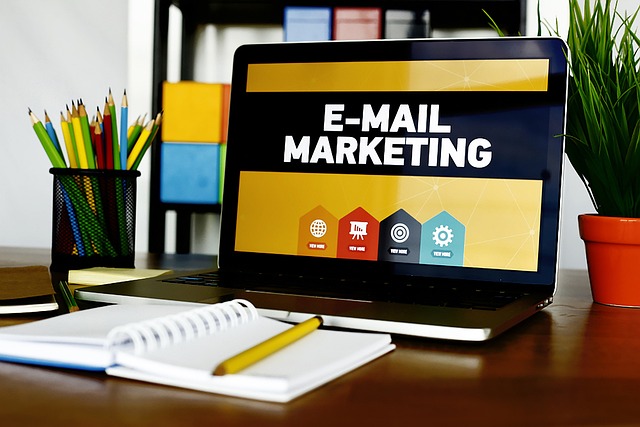Are you ready to take your email marketing campaigns to the next level? Are you tired of guessing what works and what doesn’t? Well, get ready to dive into the world of email marketing metrics, where data-driven strategies reign supreme.
In this article, we will explore the power of evaluating A/B testing and campaign optimization to skyrocket your email marketing success. A/B testing, known as the secret weapon of email marketers, allows you to test different variations of your email campaigns to determine which one performs better. From subject lines to call-to-action buttons, every element can be optimized for maximum impact. By analyzing metrics such as open rates and click-through rates, you can fine-tune your campaigns and achieve mind-blowing results.
But it doesn’t stop there. We will also delve into the importance of campaign optimization and its direct impact on conversions. By understanding how to optimize your campaigns based on metrics, you can turn casual subscribers into loyal customers.
So, buckle up and get ready to revolutionize your email marketing game with the power of data-driven strategies and campaign optimization. The possibilities are endless, and the results will blow your mind.
Key Takeaways
- A/B testing is crucial for email marketing success and can lead to a significant increase in click-through rates.
- Optimizing email campaigns through A/B testing can improve open rates by testing subject lines, personalization, send times, and audience segmentation.
- Campaign optimization plays a vital role in converting casual subscribers into loyal customers and directly impacts conversions.
- Personalized content is essential for improving conversions as it creates relevance and connection with the audience.
The Importance of Data-Driven Strategies in Email Marketing
Data-driven strategies are like a guiding compass in the vast sea of email marketing, helping businesses navigate towards success by leveraging valuable insights and optimizing campaigns.
In today’s digital landscape, data-driven decision making is essential for measuring campaign success and achieving desired results. By analyzing key metrics such as open rates, click-through rates, and conversion rates, businesses can gain deep insights into the effectiveness of their email marketing efforts.
These metrics provide valuable information about customer engagement, preferences, and behavior, allowing marketers to make data-driven decisions to optimize future campaigns. Understanding the impact of different variables and variables on campaign performance is crucial.
In the subsequent section, we will explore the concept of A/B testing and its role in campaign optimization, providing you with practical insights to further enhance your email marketing strategies.
Understanding A/B Testing and its Role in Campaign Optimization
Contractions immediately discussed the role of A/B testing in optimizing campaigns, with an intriguing statistic showing that companies using this method experience a 20% increase in click-through rates.
A/B testing allows you to compare two different versions of an email to see which one performs better. By segmenting your email list and sending different versions to each segment, you can measure the engagement and response rates for each group. This helps you understand what resonates with your audience and make data-driven decisions to improve your campaigns.
A/B testing not only helps you optimize click-through rates but can also improve open rates.
In the next section, we’ll explore how A/B testing can effectively boost open rates and increase the success of your email marketing campaigns.
How A/B Testing Can Improve Open Rates
One fascinating aspect of A/B testing is its ability to enhance the number of email opens, ultimately maximizing the impact of your message. By optimizing subject lines and improving engagement, A/B testing can significantly increase open rates.
Here are four ways A/B testing can help improve open rates:
-
Test different subject lines: A/B testing allows you to experiment with various subject lines to determine which ones resonate best with your audience, leading to higher open rates.
-
Personalize your emails: Tailoring your emails based on your subscribers’ demographics, preferences, or past interactions can make them more engaging, increasing the likelihood of opens.
-
Optimize send times: Testing different days and times for sending your emails can help you identify the optimal time when your subscribers are most likely to open and engage with your content.
-
Segment your audience: A/B testing enables you to segment your audience and send targeted emails, ensuring relevancy and higher open rates.
By implementing these strategies, you can improve open rates and set the stage for increasing click-through rates with A/B testing.
Increasing Click-Through Rates with A/B Testing
To boost click-through rates, think of A/B testing as a compass that guides you through the digital landscape, showing you the path that leads to higher engagement and conversions.
By conducting A/B tests on different elements of your email campaigns, such as subject lines, call-to-action buttons, or email layouts, you can identify what resonates best with your audience and optimize your content accordingly.
Use data-driven insights to determine which variant generates a higher click-through rate, and then implement those changes to your overall strategy. For example, you may find that a more personalized subject line or a clear and compelling call-to-action button leads to increased engagement.
By constantly improving engagement through A/B testing, you can create more effective email campaigns that drive higher click-through rates and ultimately increase conversions.
Now, let’s explore the impact of campaign optimization on conversions.
The Impact of Campaign Optimization on Conversions
Maximize your conversions by optimizing your campaigns and fine-tuning your messaging, design, and targeting to create a seamless and engaging experience for your audience. The relationship between campaign optimization and customer engagement is crucial in driving conversions. By analyzing email marketing metrics, you can identify areas for improvement and make data-driven decisions to enhance your campaign performance. Personalized content plays a significant role in improving conversions, as it creates a sense of relevance and connection with your audience. Tailoring your emails based on individual preferences and behaviors can significantly increase click-through rates and ultimately drive more conversions. Consider utilizing a 2-column, 4-row table to visualize the impact of campaign optimization and personalized content on conversions:
| Campaign Optimization | Personalized Content | Conversion Rate |
|---|---|---|
| A/B Testing | Dynamic Content | 5.2% |
| Segmentation | Product Recommendations | 4.8% |
| Subject Line Testing | Behavioral Triggers | 5.6% |
| Design Optimization | Personalized Offers | 6.1% |
By implementing these strategies, you can improve customer engagement and boost conversions. Transitioning to the subsequent section about ‘best practices for analyzing email marketing metrics,’ you can unlock further insights to optimize your campaigns and achieve even better results.
Best Practices for Analyzing Email Marketing Metrics
Discover the Data Dancefloor, where you can discovert the delightful dance of digits that will drive your email engagement and elevate your effectiveness. When it comes to analyzing email marketing metrics, data analysis is key. By tracking the performance of your campaigns, you can uncover valuable insights that will help you optimize your strategies and boost your conversions.
Here are three best practices for effective data analysis and performance tracking:
-
Set clear goals: Define what success looks like for your email campaigns and identify the key metrics that align with those goals.
-
Use segmentation: Break down your data into segments based on different criteria such as demographics, behavior, or engagement levels. This will help you identify patterns and tailor your messaging for better results.
-
Test and iterate: Continuously test different elements of your campaigns, such as subject lines, call-to-action buttons, or email design. Analyze the results and make data-driven decisions to optimize your future campaigns.
By following these best practices, you can unlock the power of data analysis to improve your email marketing performance and drive better engagement.
Frequently Asked Questions
How can data-driven strategies be implemented in email marketing?
To implement data-driven strategies in email marketing, start by incorporating analytics into your campaigns. Use data to analyze customer behavior, segment your audience, and personalize your content.
By tracking metrics like open rates, click-through rates, and conversions, you can gain insights into what’s working and make informed decisions to optimize your campaigns. Data-driven strategies enable you to target the right audience, deliver relevant content, and ultimately drive better results in your email marketing efforts.
What are some common pitfalls to avoid when conducting A/B testing?
Avoiding pitfalls in A/B testing is crucial for successful email marketing campaigns. Don’t fall into the trap of common mistakes that can hinder your efforts.
Key challenges include not having a clear hypothesis, testing too many variables at once, and ignoring statistical significance.
To overcome these pitfalls, start by clearly defining your goals and hypotheses, test one variable at a time, and ensure you have enough sample size for reliable results.
By avoiding these pitfalls, you can optimize your email campaigns and drive better results.
How can A/B testing impact other email marketing metrics, such as unsubscribe rates or bounce rates?
A/B testing can have a significant impact on engagement rates in email marketing. By testing different variables such as subject lines, content, or call-to-action buttons, you can identify what resonates best with your audience and improve open rates, click-through rates, and overall engagement.
Furthermore, A/B testing often correlates with conversion rates, as optimizing your email campaigns based on test results can lead to more effective messaging and higher conversion rates.
Are there any best practices for optimizing email campaigns beyond A/B testing?
To optimize email campaigns, it’s crucial to go beyond A/B testing.
Utilize segmentation to target specific groups based on demographics or behavior, ensuring your messages resonate with the right audience.
Incorporating personalization techniques like dynamic content or personalized subject lines can significantly improve open rates and click-through rates.
By tailoring your campaigns to individual preferences and needs, you’ll see higher engagement and ultimately drive better results.
Don’t underestimate the power of optimizing segmentation and personalization techniques in your email campaigns.
How can email marketers effectively analyze and interpret email marketing metrics to make informed decisions?
To effectively analyze and interpret email marketing metrics, think of yourself as a detective unraveling a mystery.
Analyzing trends means looking for patterns and correlations in the data, like finding clues at a crime scene.
Interpreting results involves drawing meaningful insights from the evidence, just like a detective connecting the dots to solve a case.
By approaching metrics with a data-driven mindset, you can make informed decisions and optimize your email campaigns for success.
Conclusion
Congratulations! You’ve now reached the end of this article on email marketing metrics and the power of A/B testing.
By now, you understand the importance of data-driven strategies and how A/B testing can significantly impact your campaign optimization.
Remember, just like a gardener carefully tending to their plants, analyzing email marketing metrics allows you to nurture your audience and watch your conversions bloom.
So, don’t underestimate the power of A/B testing and campaign optimization – they are the keys to unlocking success in your email marketing journey.
Start implementing these best practices today and watch your open rates, click-through rates, and conversions soar!








